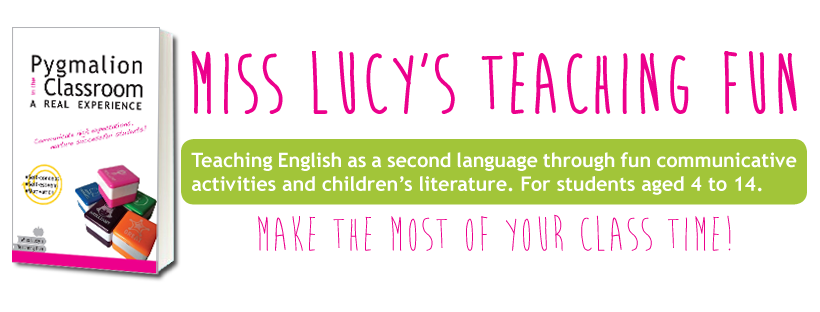I'm teaching a lot of grammar these days! Related with food, of course!
So this is a new activity I've designed for my students to learn how to use the verb 'like' in the 3rd person.
Here in Spain it is quite common that very young children might know the meaning of the verb 'like' and could use it to ask someone if he/she likes something.
But the introduction of the 3rd person in a question, with a verb different from to be or have got, is a little bit more complicate for them, and they start to study it at the age of 7.
This is a simple 'interview' activity. Each table can be cut in two halves. One half presents the name of the boy/girl/pet and ticks on the food items that he/she/it likes or doesn't like. The second half hasn't got any tick because the student who takes it will interview the other one with the first half, to know where each tick must be placed.
This way they will use these grammar structures:
Does he/she/it like…?
Yes, he/she/it does.
No he/she/it doesn't.
The words for food items you'll find in the tables (and the names of boys and girls) are the essential vocabulary that your students must know to take any of the LEVEL A1 exams.
The second part contains interviews about sports, games and other verbs, to use the -ing form.
But in the meantime you can buy this first part on my brand new e-shop:
MORE GRAMMAR: To Be and Have Got
MORE EXERCISES ABOUT FOOD: Food Sentences
--------------------------------------------------------------------------------------------------------------------------------------
DOES HE/SHE/IT LIKE...? Los niños empiezan a usar el auxiliar 'Does'
En estos días estoy enseñando mucha gramática relacionada con comida. Así que esta que os presento hoy es una actividad que he diseñado para mis estudiantes, para que aprendan a usar el verbo 'to like' en la tercera persona singular.
Es una actividad que se basa en 'entrevistas'. Cada ficha se compone de 2 partes: en una hay indicado con un 'tick'lo que al niño/niña/mascota le guste o no le guste. En la segunda mitad la faltan esos datos, que serán recopilados a por parte del niño entrevistador a través de preguntas y respuestas que utilizan las siguientes estructuras gramaticales:
Does he/she/it like...?
Yes, he/she/it does.
No, he/she/it doesn't
Os recuerdo que los nombres de comida utilizados en esta actividad son presentes en la lista de vocabulario que los niños necesitan conocer para poder decir de tener un nivel A1 de inglés.
La segunda parte presenta fichas con verbos en la forma -ing.
MÁS GRAMÁTICA: To Be and Have Got
MÁS EJERCICIOS SOBRE COMIDA: Food Sentences
Many ESL activities, I see, are nothing more than 'fill in the blank' exercises that only teach kids how to fill in blanks and miss the whole point of learning to speak and understand a new language.
It's much easier and more fun to learn by doing, and you'll be surprised at how quickly you'll see valuable results.
You can get my activities on my online store:
--------------------------------------------------------------------------------------------------------------------------------------
DOES HE/SHE/IT LIKE...? Los niños empiezan a usar el auxiliar 'Does'
En estos días estoy enseñando mucha gramática relacionada con comida. Así que esta que os presento hoy es una actividad que he diseñado para mis estudiantes, para que aprendan a usar el verbo 'to like' en la tercera persona singular.
Es una actividad que se basa en 'entrevistas'. Cada ficha se compone de 2 partes: en una hay indicado con un 'tick'lo que al niño/niña/mascota le guste o no le guste. En la segunda mitad la faltan esos datos, que serán recopilados a por parte del niño entrevistador a través de preguntas y respuestas que utilizan las siguientes estructuras gramaticales:
Does he/she/it like...?
Yes, he/she/it does.
No, he/she/it doesn't
Os recuerdo que los nombres de comida utilizados en esta actividad son presentes en la lista de vocabulario que los niños necesitan conocer para poder decir de tener un nivel A1 de inglés.
La segunda parte presenta fichas con verbos en la forma -ing.
MÁS GRAMÁTICA: To Be and Have Got
MÁS EJERCICIOS SOBRE COMIDA: Food Sentences
I design series of activities based on a communicative method that will help children to practice the grammar they're learning at school.
Many ESL activities, I see, are nothing more than 'fill in the blank' exercises that only teach kids how to fill in blanks and miss the whole point of learning to speak and understand a new language.
It's much easier and more fun to learn by doing, and you'll be surprised at how quickly you'll see valuable results.
You can get my activities on my online store:


No comments:
Post a Comment